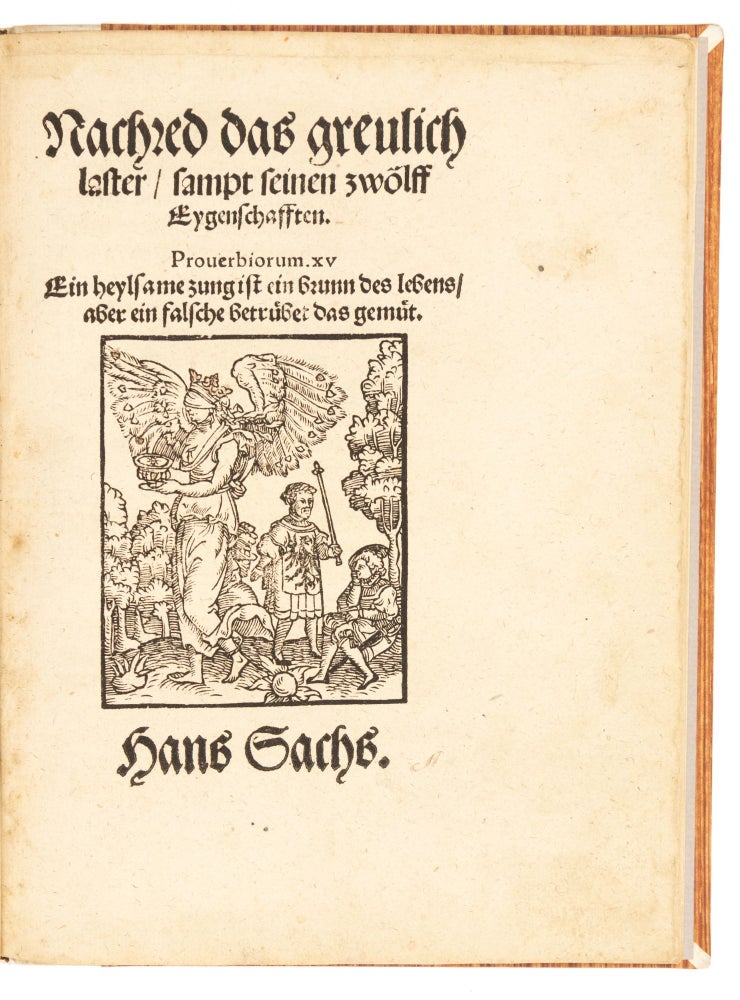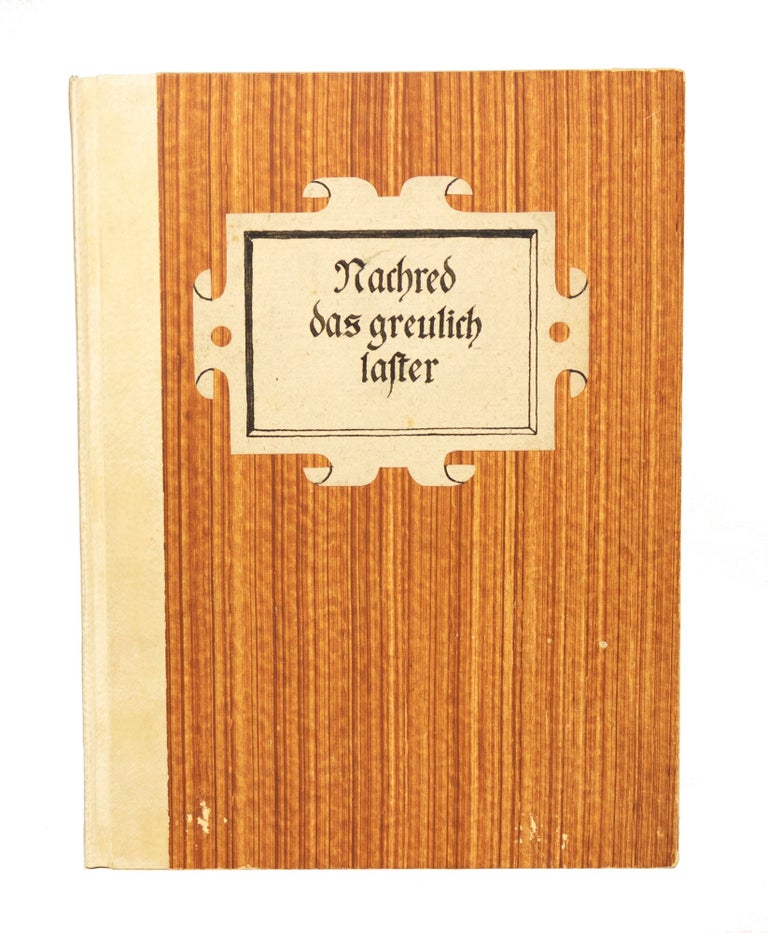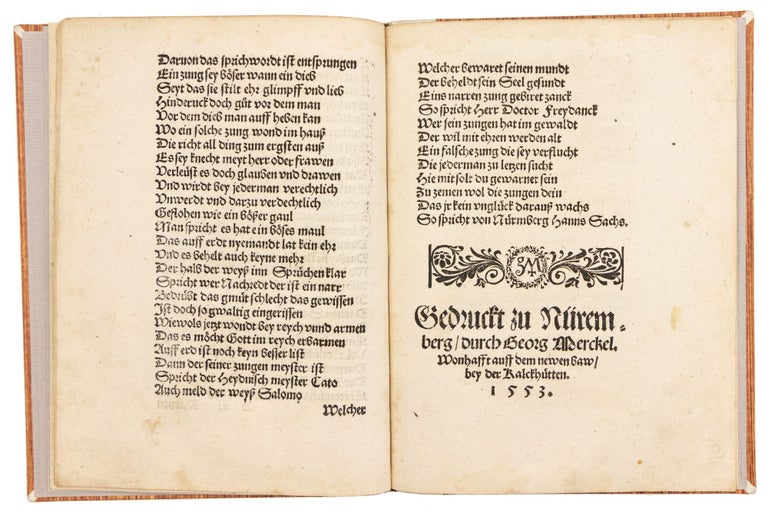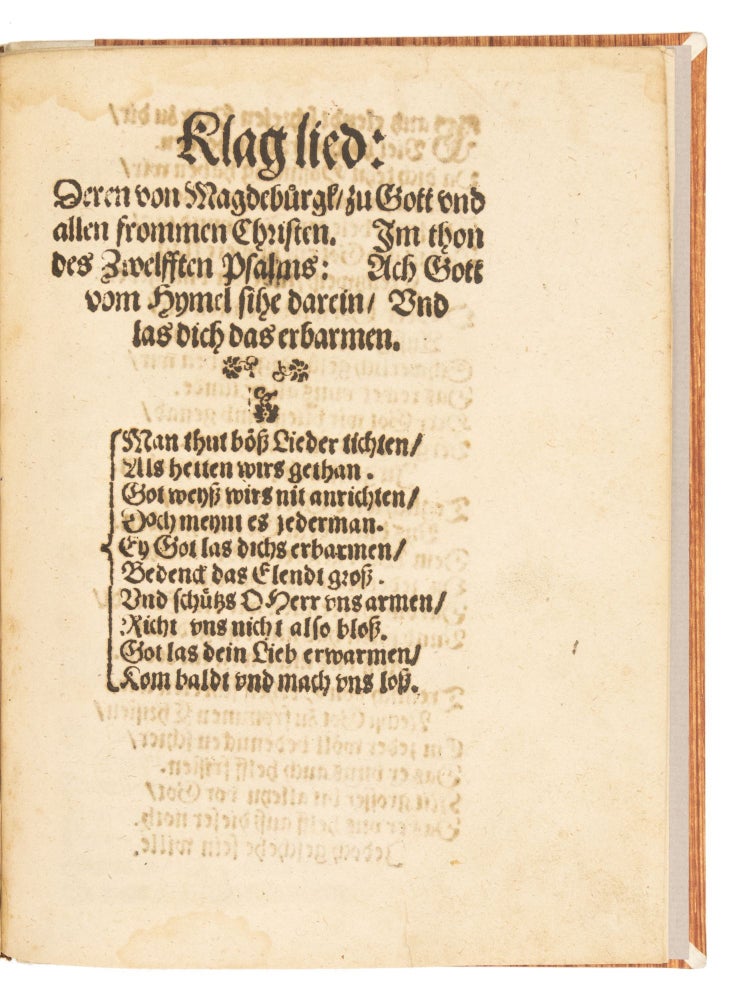Nachred das greulich laster, sampt seinen zwölff Eygenschafften.
Nuremberg: Georg Merckel, 1553.
Price: $4,500.00
Quarto: 19.5 x 14.5 cm. I. [16] p. Collation: A-B4. II. [8] p. Collation [A]4
FOURTH EDITION (1st ed. ca. 1532).
Bound in modern quarter vellum and paste paper over boards. With an unsigned title woodcut (by Georg Pencz?). A tall, broad-margined copy with a few deckled edges preserved. Small natural paper flaw on the final leaf. Bound with a second, anonymous poem, “Klaglied: Deren von Magdeburgk, zu Gott und allen frommen Christen.” [Coburg, C. Schnauß], 1551, which has light dampstains.
A popular poem on the evils of slander and gossip by the poet and playwright Hans Sachs, an accomplished Meistersinger of the Nuremberg School (Sachs is the title character of Wagner’s “Meistersinger”). A shoemaker and guild master by trade, Sachs’ songs, plays, and dialogues address the social concerns of his day and the effects of the Reformation on the established social order. Sachs’ conception of Slander personified shares affinities with Virgil’s figure of “Fama” (gossip). The poem features a remarkable woodcut illustration, in which the figure of Slander recalls Dürer's "Nemesis”.
“The contest between good and bad reports is the subject of a woodcut, possibly by Georg Pencz, illustrating… Hans Sachs’, 'Nachred das grewlich laster, sampt seynen zwölf eygenschafften' 'Slander, the horrible vice, with her twelve characteristics'. The poet has a dream one morning under a lime-tree, in which a strange woman appears to him, crowned like a queen, with wings 'brilliant as the eye in a peacock's tail’. Her left breast has a bleeding wound, and in her left hand she holds a bloody dagger behind her back. She is blind, with a braid of snakes in her hair. She holds a gold cup, filled with poison mixed with honey. Behind her she drags a flaming ball (for she brings 'Ein brinnende grimmige rach'), smeared with sulfur and pitch. She announces herself as Calumniatrix, whose power extends over all kingdoms and principalities; she asks the dreamer if he wishes to enter her service. Before he can answer, an aged herald (ehrenholdt) appears before him, whereupon the winged female figure flies off. The herald then expounds to the dreamer the twelve qualities of Nachrede ('rumour', 'calumny’). This is a figure of Fama very close to Envy.”(Hardie, Rumour and Renown: Representations of Fama in Western Literature, p. 614)
For another description of the woodcut, see Campbell Dodgson, Early German and Flemish Woodcuts, Vol. I, p. 440-1.
I. VD 16, S 464; Goed. II, 425, 63; Weller, Sachs 150. II. VD 16, K 1213






